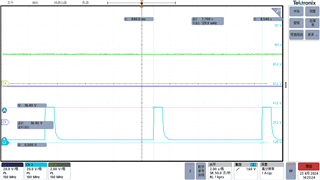Other Parts Discussed in Thread: EV2400, BQSTUDIO
Hello TI Expert!
I used the Low-side FET to control the FET when using BQ76952. Now I have a problem I want to confirm. When BQ works in normal mode, I use STM32 to give a level (3.3V or 0V) to control the DFETOFF and CFETOFF pins, which work fine. After the BQ enters the shurdown mode, there is a probability that DHG will be on and off all the time when the DFETOFF and CFETOFF pins are tdown after being wake-down from the shurdown mode. Want to know what's causing this?
I look forward to your reply. Thank you!



